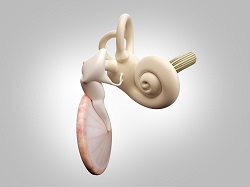Inner ear explains human migrations out of Africa
Africa is widely accepted as the place of origin of the first modern humans, and their dispersal from the home continent is well documented by genetic data. Researchers partially funded by the European Research Council’s CAMERA project have released new findings about the early migration of humans out of Africa by analysing the cavity system of the inner ear. The study was published in the ‘Proceedings of the National Academy of Sciences’ journal. The international team of researchers led by paleoanthropologists from the University of Zurich used computed tomography (CT) to obtain high-resolution 3D models of the inner ear structure from populations all over the world. The three inner ear sections in question – the vestibule, semicircular canals and cochlea – are also known as the ‘bony labyrinth’ because of their looping, maze-like structure. Differences within and between populations The CT data was acquired from a sample of 221 ancient skulls, representing 22 worldwide populations and spanning the past 6 000 years. These were from Central Europe, Japan and Indonesia. Their analysis revealed a greater degree of labyrinth shape variety within populations than between populations. In a news release by the University of Zurich, the researchers said “morphological data from the skull and skeleton often only allow limited conclusions to be drawn about the geographical dispersal pattern, especially because of the many ways in which the human skeleton adapts to local environmental conditions.” They emphasised that the morphology of the inner ear is “a good indicator for population history and human dispersal.” Quoted in the same press release, Marcia Ponce de León, one of the researchers, said: “This typically human variation pattern is also known from comparative genetic data.” She added: “It shows that all humans are very closely related and have their roots in Africa.” In their analysis, the researchers drew connections between morphology, genes and geography. They found that differences in the shape of the bony labyrinth increased as distance from Africa increased. They also showed that despite the functional role the bony labyrinth plays in assisting balance and hearing, human evolution has allowed for a surprisingly large amount of variation inside the ear. DNA extraction The team recommended that future studies capture high-resolution morphological data from skeletal samples before using destructive techniques, such as genetic sampling, to extract organic material from structures such as the petrous bones or teeth. The petrous portion of the skull’s temporal bone, one of the hardest, densest bones in the body, protects the inner ear structures. “Because petrous bones have become prime targets of ancient DNA recovery, we propose that all destructive studies first acquire high-resolution 3D computed tomography data prior to any invasive sampling,” the researchers noted in the journal article. They concluded: “Such data will constitute an important archive of morphological variation in past and present populations, and will permit individual-based genotype-phenotype comparisons.” The ongoing CAMERA (Characterizing Adaptation and Migration Events with Modern and Ancient Genomes) project that supported the study aims to generate and analyse data in order to understand the molecular basis of human adaptation to high altitude. It also investigates the timing of the Polynesian-South American contact. It will develop statistical approaches that combine ancient and modern genetic data to estimate the timing and the intensity of a selective sweep and an admixture event. For more information, please see: CAMERA project
Countries
Switzerland



